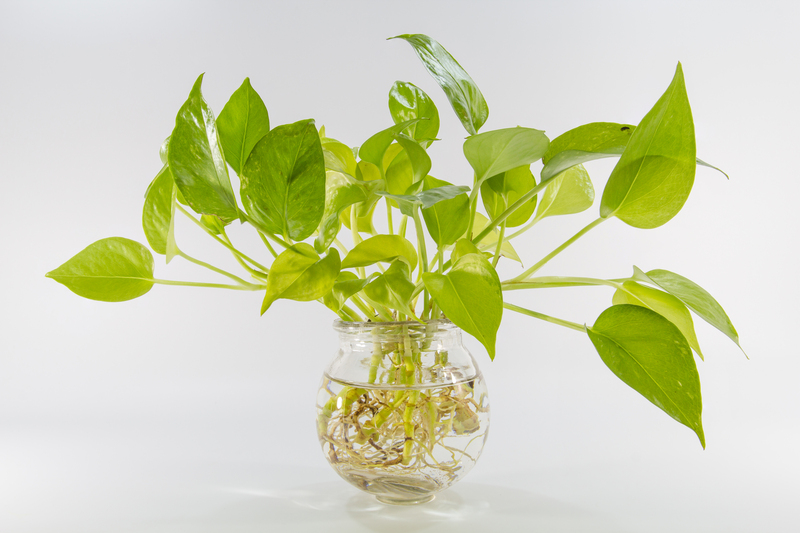Nine Top Ground Covers to Transform Your UK Garden
Posted on 16/05/2025
Introduction
Transforming your garden into a lush, vibrant haven doesn't always require a complete overhaul. By integrating ground covers, you can effortlessly beautify large areas of your garden, reduce maintenance, and create a more cohesive landscape design. In this article, we explore the top nine ground covers that are perfect for UK gardens, offering not only aesthetic appeal but also practicality.

Why Choose Ground Covers?
Ground cover plants are an excellent choice for gardeners who seek an attractive, low-maintenance alternative to regular turf grass. These plants spread to cover the soil, helping to suppress weeds, improve soil quality, and reduce erosion. Their diverse range includes flowering varieties, ornamental grasses, and evergreen perennials, each offering distinct benefits.
Key Benefits of Ground Covers
- Low Maintenance: Most ground cover plants require minimal attention once established.
- Disease Resistance: These plants can help prevent soil-borne diseases.
- Environmental Control: They moderate soil temperature and moisture levels.
- Eco-friendly: Ideal for creating wildlife habitats and supporting biodiversity.
Top Nine Ground Covers for UK Gardens
1. Creeping Thyme (Thymus serpyllum)
Creeping Thyme is a versatile and aromatic choice for any UK garden. Known for its delicate purple flowers, it attracts pollinators like bees and butterflies. This evergreen perennial thrives in sunny spots and well-drained soil. Its low-growing habit and fragrant foliage make it ideal for stone pathways and as a lawn alternative.
2. Sedum Acre (Goldmoss Stonecrop)
Sedum Acre is a hardy succulent, perfect for dry areas and rock gardens. Its vivid yellow flowers bloom in summer, providing a striking contrast against its fleshy, green foliage. Sedum excels in nutrient-poor soil and can thrive on neglect, making it a popular choice for those seeking easy-care solutions.
3. Ajuga Reptans (Bugleweed)
Featuring vibrant purple-blue flower spikes and rich, dark foliage, Ajuga Reptans is a stunning addition to shaded areas. It forms dense mats that suppress weeds effectively. A robust choice for underplanting trees and shrubs, Bugleweed adapts well to various soil types and offers year-round interest.
4. Heuchera (Coral Bells)
Renowned for its striking foliage in shades of burgundy, plum, and green, Heuchera adds a pop of colour to your garden. Its small, bell-shaped flowers appear in late spring, enhancing its aesthetic appeal. Ideal for borders and shaded areas, Coral Bells are both deer-resistant and require minimal care.
5. Vinca Minor (Lesser Periwinkle)
Vinca Minor is a classic choice for ground cover, known for its glossy leaves and charming blue-purple flowers. This vigorous grower can quickly cover large areas, even in dense shade. Its evergreen nature ensures year-round coverage, making it a reliable option for those wanting a consistently green garden.
6. Lamium Maculatum (Spotted Dead Nettle)
With its silver-spotted leaves and vivid pink, white, or purple blooms, Lamium Maculatum brightens up shady corners of your garden. Known for its rapid growth, it forms a lush carpet that prevents weed invasion. Easy to propagate, it thrives in moist, well-drained soil and provides excellent erosion control.
7. Alchemilla Mollis (Lady's Mantle)
Lady's Mantle boasts distinctive, fan-shaped leaves that collect dew, creating a stunning, shimmering effect. In summer, its chartreuse blooms add a soft, ethereal quality to garden beds and borders. Perfect for cottage gardens, Alchemilla Mollis is undemanding and adaptable to a variety of conditions.
8. Convallaria Majalis (Lily of the Valley)
Lily of the Valley is cherished for its delicate, bell-shaped white flowers and sweet fragrance. Ideally suited for woodland settings, it thrives in shady, moist environments. While it provides excellent ground cover, caution is advised as all plant parts are toxic if ingested.
9. Epimedium (Barrenwort)
Epimedium offers fabulous spring flowers in hues of pink, yellow, and white against a backdrop of heart-shaped leaves. Its ability to grow in deep shade and dry conditions makes it perfect for under trees and shrubs. Additionally, it forms a tough, weed-suppressing mat that contributes to biodiversity.

How to Plant and Care for Ground Covers
Choose the Right Location
Select a location that matches the plant's natural habitat. Consider sunlight exposure, soil type, and moisture levels to ensure your ground covers thrive.
Soil Preparation
Most ground covers prefer well-drained soil. Prepare the site by clearing weeds, loosening the soil, and, if necessary, incorporating organic matter to improve structure.
Planting
Space the plants according to species-specific recommendations, ensuring they have enough room to spread. Water them thoroughly during the initial planting stage to encourage strong root development.
Maintenance
Once established, ground covers are generally low-maintenance. Water during dry spells, prune as needed to maintain desired coverage, and monitor for pests or diseases. Regularly check and remove invasive weeds.
Conclusion
Incorporating ground covers in your UK garden offers a practical and aesthetic solution to landscaping challenges. From the fragrant Creeping Thyme to the elegant Epimedium, the diversity in choice ensures that there's a perfect plant for every corner of your garden. By selecting the right ground covers, you'll create a more resilient, eco-friendly, and visually appealing landscape that enhances your outdoor living space.

